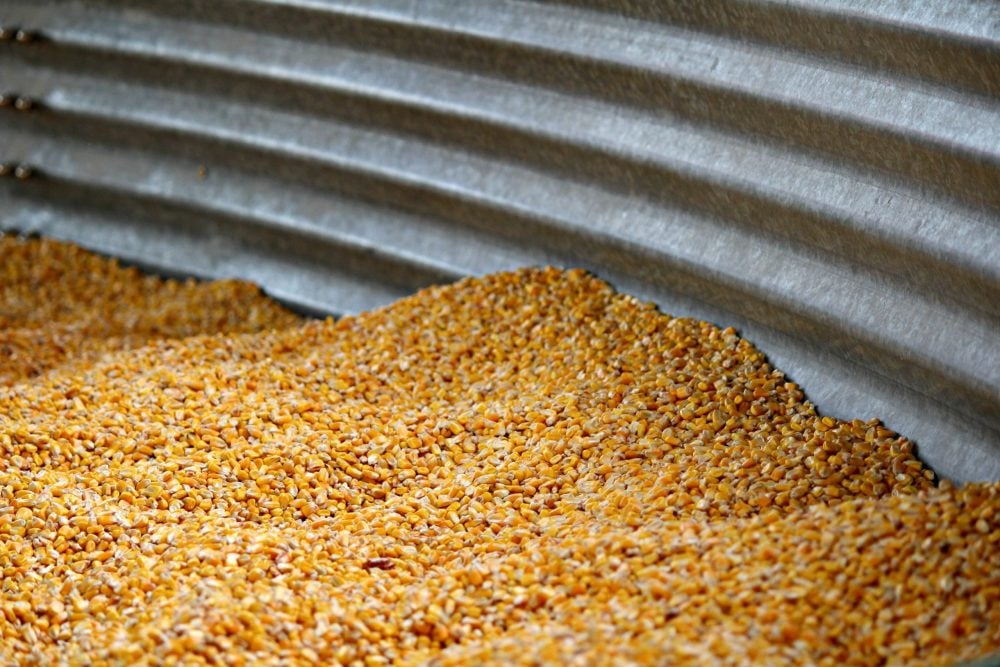Over the past 30 days, the Ontario growing region has experienced normal temperatures and received average precipitation. There are some dryer pockets in the eastern counties closer to Ottawa. After a very cool April and May, the bulk of Ontario corn, soybean and wheat crops are developing under favorable conditions.
The forecast for July calls for normal to above normal temperatures and normal to below normal precipitation. This is favorable for winter wheat but we may see some yield drag on corn and soybeans.
Quick look
Read Also

Cycle swings dictate farming profitability
It can be profitable to understand where the crop markets are positioned in the context of their big-picture cycles.
Soybeans: Watch for weather market opportunities if crop conditions erode in the U.S.
Corn: Farmer selling has been slow in Canada and the U.S.
Wheat: European yields decline, but Russian volume fills the difference.
THE USDA June WASE report was considered neutral to bearish for wheat, corn and soybean markets. Ontario elevator bids for winter and spring wheat were softer in mid-June as the markets factor in northern hemisphere harvest pressure. Soybean and corn prices were slightly higher compared to earlier in June as the markets maintain a small risk premium until yields in Ontario and the U.S. are more certain. Corn and soybean futures markets will be digesting weather forecasts over the next month, which can result in severe volatility.
The June Canadian dollar reached a high of 75.10 cents U.S. on June 10 but then came under pressure after comments from Federal Reserve chairman Powell reflected that equity markets may have got ahead of themselves on lower liquidity and overabundant optimism. The view of the Federal Reserve is that the U.S. economy is only expected to recover in 2021.
In addition to the Federal Reserve comments, many multinational companies expect a second wave of COVID to occur during the third quarter of 2020. Fears of “potential” rising cases could temper economic conditions. Investor risk sentiment switched from “on” to “off” in mid-June, which set a negative tone for the resource-based Canadian dollar. The upside in the Canadian dollar is defined for the time being and we’re looking for consolidation type trade for the resource-based currency.
Soybeans
Old and new crop soybean futures are trading near the highest levels since mid April due to Chinese buying. U.S. soybeans out of the Gulf are about $12 to $15 discount to Brazilian origin, which has enhanced overall export demand. The recent weakness in the Canadian dollar along with stronger futures markets has strengthened Ontario soybean prices.
We’ve also seen export demand improve for Ontario soybeans. Stronger soymeal and soybean oil prices have also supported domestic crush margins. Crude oil values are near three-month highs, which has supported the biodiesel component of the vegetable oil complex.
Looking forward, there are three main factors to watch for price direction. First, crop condition ratings south of the border tend to erode moving into July. The U.S. soybean crop was rated 72 per cent good to excellent as of June 14 and unless perfect conditions materialize, ratings will not improve much beyond this level. Over the next couple weeks, one has to take a contrarian view of crop conditions. We’re entering the key period for weather markets.
Secondly, export demand will continue to support the soybean market. If China backs away from U.S. soybeans, this would be obviously negative. The political relationship between Beijing and Washington will continue to influence the soybean market more than any other commodity. Finally, energy values and economic conditions due to the recent COVID pandemic will continue to influence soybean values. As one epidemiologist stated, has the second wave started or are we still in the first wave?
What to do: Farmers can understand that forecasting the price outlook for soybeans is almost impossible given the conditions driving the market. At this stage of the crop year, we’ve advised producers to be 80 per cent sold on old crop and 20 per cent sold on new crop. We’re planning to make our final sale for the 2019 crop in early July. The market is in a predicament where we could see a significant move in either direction and we’ve assessed the risk reward accordingly throughout the crop year.
Corn
Corn futures have been balancing favorable crop conditions, lackluster farmer selling, export and domestic demand and a large short speculative position. We’re rating the Ontario corn crop 60 per cent good to excellent, 30 per cent fair and 10 per cent poor. The forecast looks favorable for Ontario crop development until the end of June.
The U.S. corn crop was rated 71 per cent good to excellent compared to the previous week of 75 per cent. For the U.S. Midwest, certain weather models are calling for limited precipitation over the next two weeks so timely rains will be needed to maintain current crop conditions. Farmer selling has been rather slow over the past couple weeks on both sides of the border. Ontario elevator bid prices are about 20 cents a bushel higher compared to two weeks ago in an effort to attract farmer selling.
U.S. export sales have been somewhat disappointing. For the week ending June 4, export sales were 660,700 tonnes for the 2019/20 crop year and 25,900 tonnes for the 2020/21 crop year. Total corn export sales commitments are now 41.12 million tonnes, down 15 per cent from last year. The U.S. is experiencing export competition from Argentina in the short term.
Ontario corn exports have also come to life underpinning domestic prices. Canadian crop year-to-date corn exports for the week ending June 7 were 203,700 tonnes. While this is down from last year’s pace of 1.5 million tonnes, it’s an improvement from earlier in spring when sales were only 12,500 tonnes.
The U.S. and Canadian ethanol grind continues to improve as energy prices have strengthened. Finally, On the recent commitment of traders’ report, the large speculative trader was net short 332,285 contracts which is the second largest short position on record. No one wants to sell the corn futures with market vulnerable to short covering rally going into the key pollination period.
What to do: We’ve advised producers to be 100 per cent sold on old crop and 20 per cent sold on new crop. Looking forward, we may experience a minor rally if adverse weather materializes. However, the world and U.S. corn fundamentals are burdensome for the 2020/21 crop year. During the fall period, the corn market will function to encourage demand through lower prices. Last year, the Ontario domestic market rationed demand and traded at a premium to world values due to late seeding and wet harvest period. At this stage, we factor in normal conditions.
Therefore, the Ontario corn market will be weighed down by the world market. Ontario domestic prices need to trade at a discount to the world market so that export prices are competitive with U.S. corn out of the Gulf.
Wheat
Ontario wheat values are under pressure as the market digests the northern hemisphere winter wheat harvests. The U.S. winter wheat harvest was 15 per cent complete as of June 14, which compares to the five-year average of 15 per cent.
The Russian and European winter wheat harvests will be in high gear by mid July. Russian export restrictions will be lifted on July 1 and we’ve recently seen Russian origin wheat win major tenders to Egypt and other destinations. We wouldn’t be surprised to see Russian wheat trade into Mexico and Central America during the fall period, which is typically the backyard for U.S. and Canadian origin. Russian and Ukraine quality appears to be improving each year.
The USDA June WASDE report was considered bearish for the wheat complex. Despite lower production in Europe, the year-over-year gains in Russia, Australia and Argentina more than made up for the European decrease. European production was estimated at 141 million tonnes, down from 155 million tonnes last year. It appears that the Russian yields were not tempered by the dryness earlier in winter and spring.
The USDA had Russian output at 77 million tonnes, up from the 2019 output of 73.6 million tonnes. Recent rains have improved Australian prospects with the crop projected to reach 26 million tonnes, up from 15.6 million tonnes last year. U.S. hard red winter wheat production was estimated at 20.5 million tonnes, down from the 2019 output of 22.7 million tonnes. This may seem a bit redundant from last issue but you have to remember traders are updating their production forecasts from major exporters on a weekly basis at this time of year.
The Ontario winter wheat crop is in the heading stage and we’re rating the crop 65 per cent good to excellent. We continue to project an Ontario winter wheat crop of 2.5 million tonnes, up from 1.4 million tonnes last year. The USDA had the U.S. soft red winter wheat crop at 8.1 million tonnes, up from 6.5 million tonnes last year. We’ve mentioned in previous issues that the function of the Ontario wheat market is to encourage export demand through lower prices for the 2020/21 crop year.
What to do: We’ve advised producers to be 100 per cent sold on old crop and 20 per cent sold on new crop. This will allow producers with some movement during harvest. Seasonally, wheat makes the lows in late July or early August because there is so much selling on the world market at this time, we want to avoid selling during this period. Our next sales recommendation will be during the last half of October once the corn harvest is over 50 per cent complete. There will be no home runs in the wheat market this year. Our strategy is to make timely regular sales on seasonal rallies.













